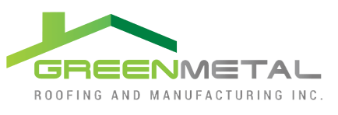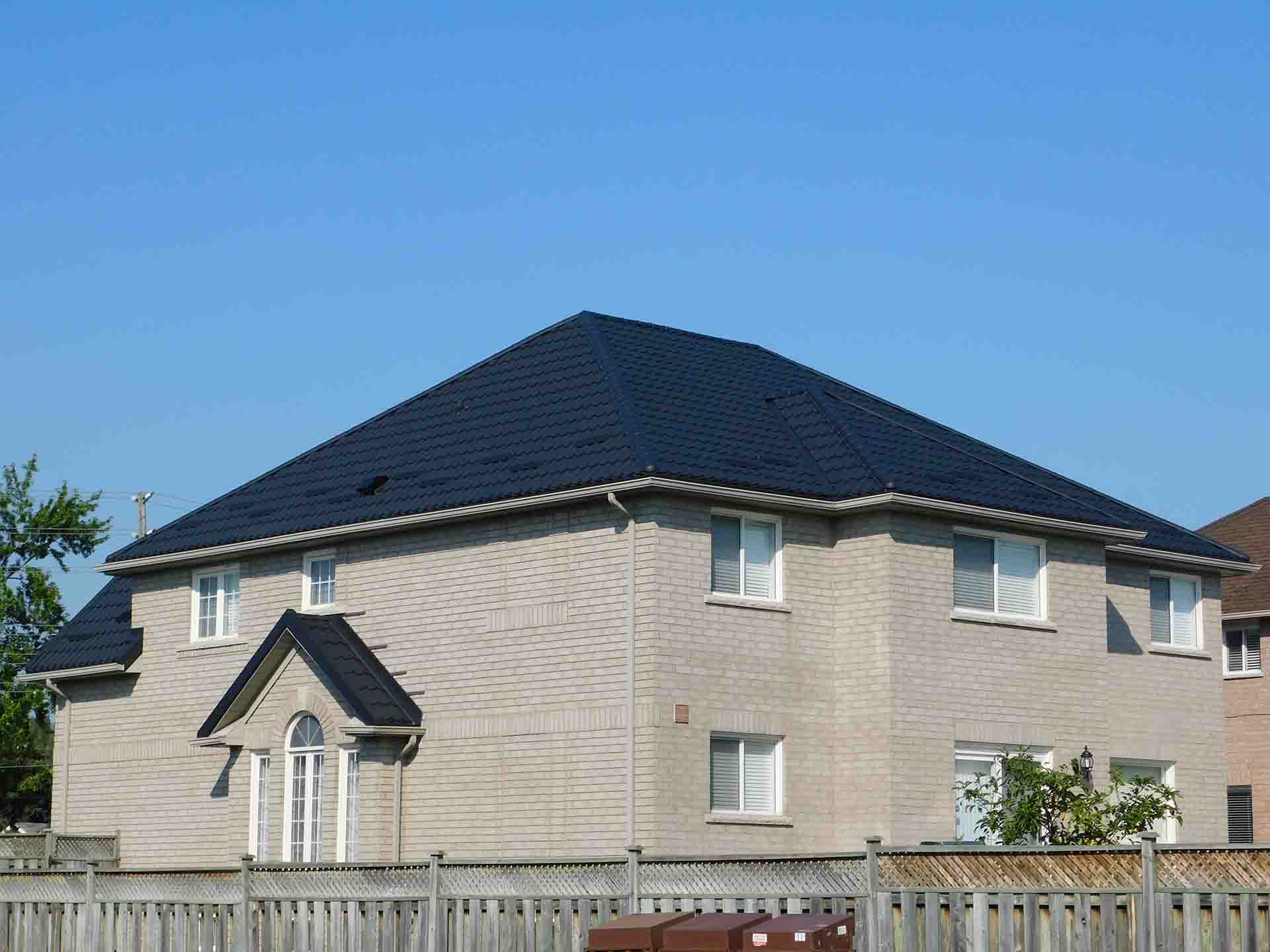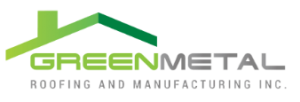Roofs help define the character of a home. Asphalt shingles have been the dominant choice for residential roofing over the years, but metal roofing systems have been gaining popularity. The advantages of metal roofs are their durability, longevity, and their resistance to almost any outdoor situation.
Below we highlight what you need to know about metal roofing:
Metal Roofing is Energy Efficient
Compared to other roof materials, metal roof stays 10 to 15 degrees cooler during the peak summer months. Light-coloured metal roofs naturally reflect more of the sun’s energy than their darker counterparts. There are also new heat-reflective paint options available that allow dark-coloured metal roofs to still adhere to Energy Star requirements. The savings in heat reflection is ideal in areas where cooling costs are higher than expenses. During the winter months, metal roofs are great insulators. They allow water and snow to easily slide right off of them and trap the warm air from escaping your home.
Metal Roofing Materials
Metal roofing materials come in a wide variety, with some posing benefits over others. Those metal roofing materials include:
Steel – This is the strongest, most popular, and, typically, least expensive option. To prevent rust, it’s usually dipped in molten zinc (making galvanised steel) or an aluminium-zinc alloy called Galvalume. Dipped steel can be left in a silvery state, but is generally painted to maximise longevity.
Aluminium – Lighter, softer, and pricier than steel, aluminium comes in many of the same embossed styles. Aluminium is almost always painted. It is a good choice in areas with salt air or acid rain since it doesn’t rust.
Copper – The oldest, longest-lasting, and most expensive metal for roofing, copper is easy to cut and shape. Unlike other metals, which are specified by thickness, or gauge, roofing copper is specified by its per-square-foot weight in ounces.
Terne – Tin-and-lead-coated roof is often painted to protect its iron substrate. Today’s lead-free version is stainless steel sandwiched between layers of tin. This naturally resists the harshest conditions, never needs paint, and weathers to a uniform matte grey.
Zinc – Similar to copper, zinc is naturally weather-resistant. Often alloyed with titanium for strength and extra corrosion resistance, it’s easy to form and work with. Over time zinc weathers to a bluish-grey.
Metal roofing requires Minimal Maintenance
The level of upkeep to maintain a metal roof is generally minimal especially if the roof was correctly installed. Maintenance of a metal roof usually includes looking for leaves, branches, and other debris that could get stuck on the roof and in the gutters. Ideally, you want to check on a metal roof once or twice a year, and after strong storms.
Metal roofing is impervious to fire, rot and insect damage
Metal roofs are very durable, they prevent rot and insect damage. They are also fire-resistant. Which is a popular feature for areas that are prone to wildfires. However, a fire-resistant roof is also a good preventative feature for any home to have in the case that your neighbour’s home catches on fire. Wind-blown embers will be prevented from catching onto your home. Another preventative feature that metal roofs have is that termites and insects cannot consume metal material. Lastly, metal roofs are also sealed to the point that mildew and rot are not able to form.
Metal roofing does not attract lightning
A metal roof is no more prone to lightning strikes than any other roofing material. Lightning would be more likely to strike the tallest object in the area such as a chimney or tree than a metal roof. In the event that lightning does strike a metal roof, it would not ignite into flames because it’s a noncombustible material. In this case, a metal roof would be more desirable than an asphalt roof that would begin to burn if hit by lightning.
Metal roofing is just as noisy as asphalt roofing
Compared to asphalt shingles, metal roofs experience the same noise when rain or hail falls on them. With correct installation, a metal roof’s noise level is equivalent to any other roofing material. Metal roofing is typically put over a solid base. Along with the attic and insulation, they all act together as a sound barrier.
Metal Roofing is Environmentally Friendly
Metal roofs are often made up of 25 to 95 percent recyclable material. Even though metal roofs are extremely durable when it comes time to replace the old metal, it is usually accepted at metal recycling centres. Compared to shingle roofs, they may have some recycled material but the vast majority do not. At the end of the lifespan of shingles, they tend to end up in landfills. Metal roofs are an environmentally friendly option for roofing solutions.
Metal Roofing Prevents Ice Dams
An advantage of metal roofing in Canada is the reduction or elimination of roof ice dams. During the winter ice dams can cause thousands of dollars in damage to a roof. However, a metal roof creates a ventilated space that stops ice dams from forming and snow melts uniformly. Since metal roofs are efficient at sliding snow and ice off from their surface, any snow that falls will be added work when shovelling or snow blowing.
Metal roofing can be damaged by severe hail
Metal roofs are far more durable than asphalt shingles and other types of roofing materials, but they are not indestructible. Large hail is one weather condition that is concerning for any roof type. When hailstones reach golf-ball size, aluminium and copper roofs are prone to denting. Steel, on the other hand, performs better in hailstorms and if you live in an area where severe hailstorms occur frequently, steel is a material to consider. Hailstones the size of a pea or even a dime are rarely a concern for metal roofs.
Metal roofing provides many benefits to homeowners. They are durable, long-lasting, require minimal maintenance and are energy-efficient. Especially when compared to asphalt shingles. Despite the cost of installing and purchasing material for a metal roof, the benefits make it a worthwhile investment. The added features of a metal roof can also increase your home value. When the time comes to replace your roof, metal roofing should be a top consideration.


